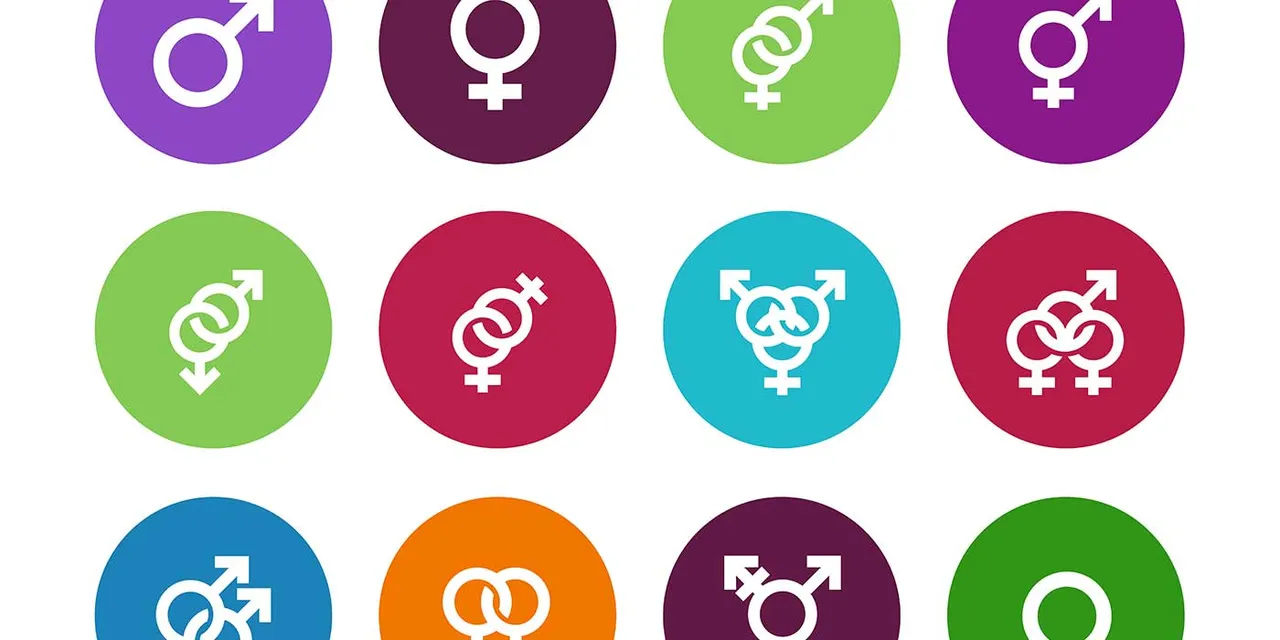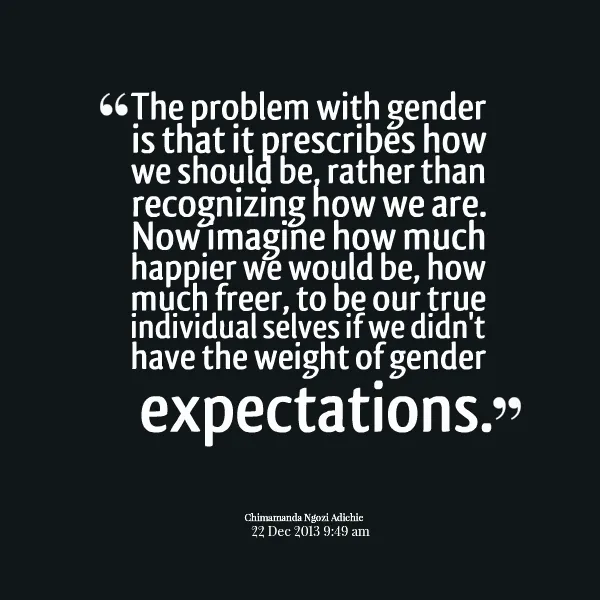Understanding Gender As a Bipolar Unifactorial Construct

Image Source
Early examinations on gender saw it as a unifactorial build, with masculinity and femininity as inverse finishes of a solitary range of qualities. In spite of the fact that masculinity and femininity themselves were not obviously characterized or drawn nearer because of a hypothesis, measures were thought to be exact pointers of these attributes.
Idea measuring gender development:
Terman and Miles' Attitude-Interest Analysis Survey (AIAS)
Strong's Masculinity-Femininity Scale of the StrongVocational Interest Bank (SVIB)
Minnesota Multiphasic Personality Inventory(MMPI) Masculinity-Femininity Scale)
GAMINInventory Masculinity Scale
Femininity Scale of the California Psychological Inventory (CPI).
Basic purposes of these measures:
The measures depended on the presumption that sex contrasts in reactions likened to contrasts in gender. Strong's SVIB, for instance, was built by distinguishing any distinctions as far as how men and ladies for the most part reacted – whether those distinctions were measurably noteworthy or not. Therefore, masculinity and femininity depended on how men and ladies varied in reactions, despite the fact that Strong surrendered that men and ladies were for the most part more comparative than various.
The measures depended on the supposition that gender was a bipolar build that gone from outrageous masculinity to extraordinary femininity. Masculinity and femininity were sufficiently straightforward builds to be each evaluated by a solitary score. Constantinople contended that masculinity and femininity are unpredictable develops that can be made out of various considers various settings. Men and ladies could likewise be both feminine and masculine in the meantime, in this way not so much supporting the idea of a bipolar, unifactorial develop.
The measures depended on the supposition that feminine ladies and gay men were basically indistinguishable. The femininity measurement of the MMPI, for instance, was approved utilizing scores from gay men. A more extensive ramifications of this presumption was the idea that the measures basically endorsed ordinary characteristics and any distinction was degenerate. For instance, Terman and Miles' AIAS was utilized to recognize men and ladies who did not fit the standard of masculinity and femininity individually, which could be characteristic of homosexuality or sexual reversal.
The measures depended on the supposition that gender was static crosswise over age and setting. Measures were frequently created utilizing kids, and afterward connected to anybody from kids, young people, and grown-ups, with the supposition that the things would in any case fit, a contention that has been negated by thinks about on gender improvement. Gender developments were additionally accepted to be impenetrable to any societal or relevant changes, so measures did not should be reevaluated notwithstanding extraordinary societies or eras.
Lastly, the measures depended on the supposition that no remittances should have been made for singular definitions and conceptualizations of gender. Lewin and Hoffman contended that, as masculinity and femininity are basically segments of one's self-idea, and are thusly reliant on how an individual characterizes these develops and how they apply to her or him. This conflicts with the thought of cliché ideas of gender as layouts for characterizing masculinity and femininity.
The 1970's brought another approach and comprehension of gender that is still frequently utilized today. The development corresponded with and was impelled on by the ladies' freedom development: women's activists and therapists began researching the ways that gender was characterized and how the build was utilized. The accompanying segment concentrates fundamentally on Sandra Bem's and Janet Spence's speculations and instruments.

Image Source
Femininity, masculinity, and androgyny
The principle commitment right now to the investigation of gender was the consideration of the idea of androgyny, that of being both masculine and feminine. While androgyny was not another idea, it was a novel application to examines on gender, making ready to understanding masculinity and femininity as isolated, free builds. Bem's gender instrument, the Bem Sex-Role Inventory (BSRI) was intelligent of her hypothesis.
It likewise contrasted from past methodologies as it characterized gender from the outside in, securing the instrument in a socially built perspective of gender. The scale was produced utilizing characteristically masculine and characteristically feminine qualities drawn from an assortment of contemporary sources.
Spence's work with her associates around an indistinguishable time from Bem, prompted the advancement of the Personal Attributes Questionnaire (PAQ). Like BSRI, Spence's PAQ clung to the idea of isolated masculinity and femininity builds, utilized positive characteristics in light of the cliché man and lady, and scored people as being masculine, feminine, androgynous, and undifferentiated. There were basic contrasts however between the BSRI and PAQ as scales and the hypotheses basic their advancement.
The PAQ incorporated a third scale, MF, which included socially alluring attributes of a man, paying little respect to sex. All the more fundamentally, while Spence at first marked these develops in the PAQ as femininity and masculinity, she has contended that it is more precise to distinguish these builds and scales as alluding to and measuring expressiveness and instrumentality , individually. In accordance with this, Spence has suggested that the BSRI additionally measures instrumentality and expressiveness, as opposed to masculinity and femininity, a thought that Bem has rejected.
Bem's and Spence's hypotheses and measures have been instrumental in deciding how gender is seen today. Hoffman abridges these progressions to the following:
The thought of gender similar to a solitary, bipolar build was rejected, with masculinity and femininity thought to be two separate develops, to be measured independently.
While the presentation of androgyny into the exchange has took into account a more extensive comprehension of gender, the way it has been characterized has been scrutinized also, especially attributable to its dependence on the duality of masculinity and femininity.
The BSRI and PAQ keep on being the most regularly utilized gender instruments. The open deliberation in regards to masculinity-femininity and instrumentality-expressiveness, in any case, has took into consideration the improvement of new schools of imagined that get rid of the masculinity-femininity develop by and large. The last area talks about instruments and hypotheses on gender today.

Image Source
Reference:
Femininity & Masculinity
By: Vivienne V. Valledor-Lukey